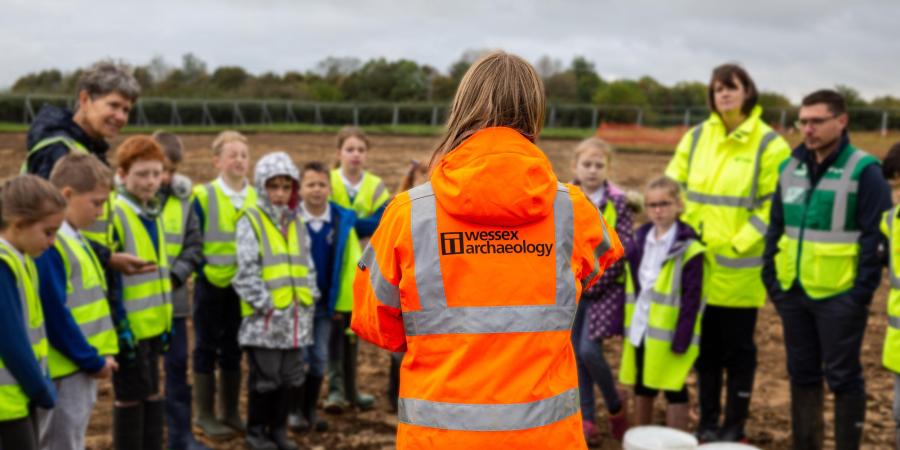Wessex Archaeology was commissioned by BAM Construction Ltd to undertake an archaeological excavation on the outskirts of Somerton, ahead of construction work for a primary school that will replace the current King Ina Junior and Infants’ schools.
Most notably, ancient burials unearthed on the Somerset County Council-owned land have shed significant light on life and death in Roman Somerset.
Our work
Prior to the excavation Wessex Archaeology undertook a geophysical survey in May 2019, followed by targeted evaluation trenching in June 2019. This work highlighted that the site contained Late Iron Age / early Romano British round houses and a series of enclosure ditches typical of a Romano British agricultural settlement.
Due to the archaeological potential of the site, excavation work was a requirement of planning permission granted by South Somerset District Council. The excavations were carried out between August – December 2019, with the aim of investigating the sequence of past human activity on this site.
During mitigation work, Wessex Archaeology also ran a series of community engagement events for the local community, including the school children that will benefit from the new facilities.
Preliminary results have revealed a sequence of past human activity spanning around 1500 years, from the late Bronze Age to the end of the Romano British Period.
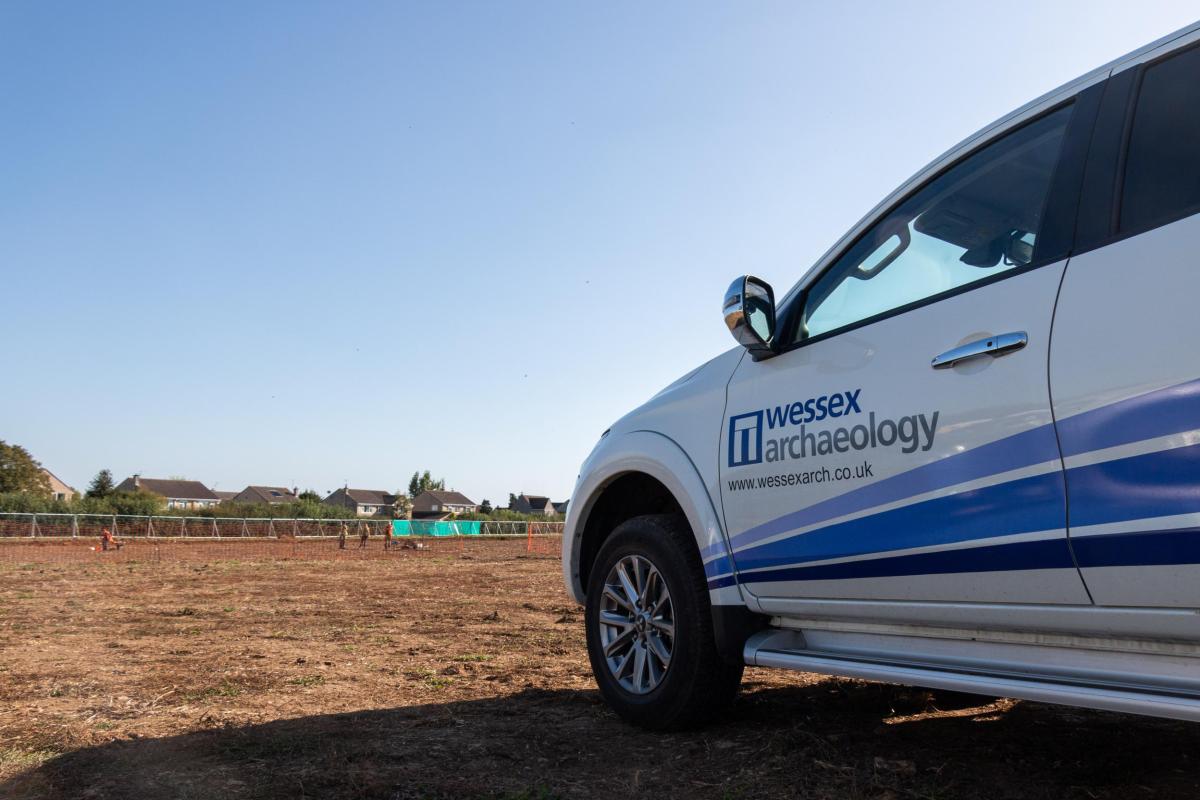
Early history
The earliest evidence of human activity was provided by small fragments of possible late Bronze Age / early Iron Age pottery found in association with the remains of a possible barrow.
The Iron Age phase of occupation is dominated by two distinct groups of roundhouses. The earliest group of roundhouses are in the northwest of the site and are of traditional construction, based on evidence of postholes and eves drip gullies. The second group of roundhouses see the settlement shift to the southeast portion of the site. The roundhouses here are of a more unusual construction with specifically cut foundation trenches for the walls of the structure. This group of roundhouses may have been occupied into the early Romano British period.
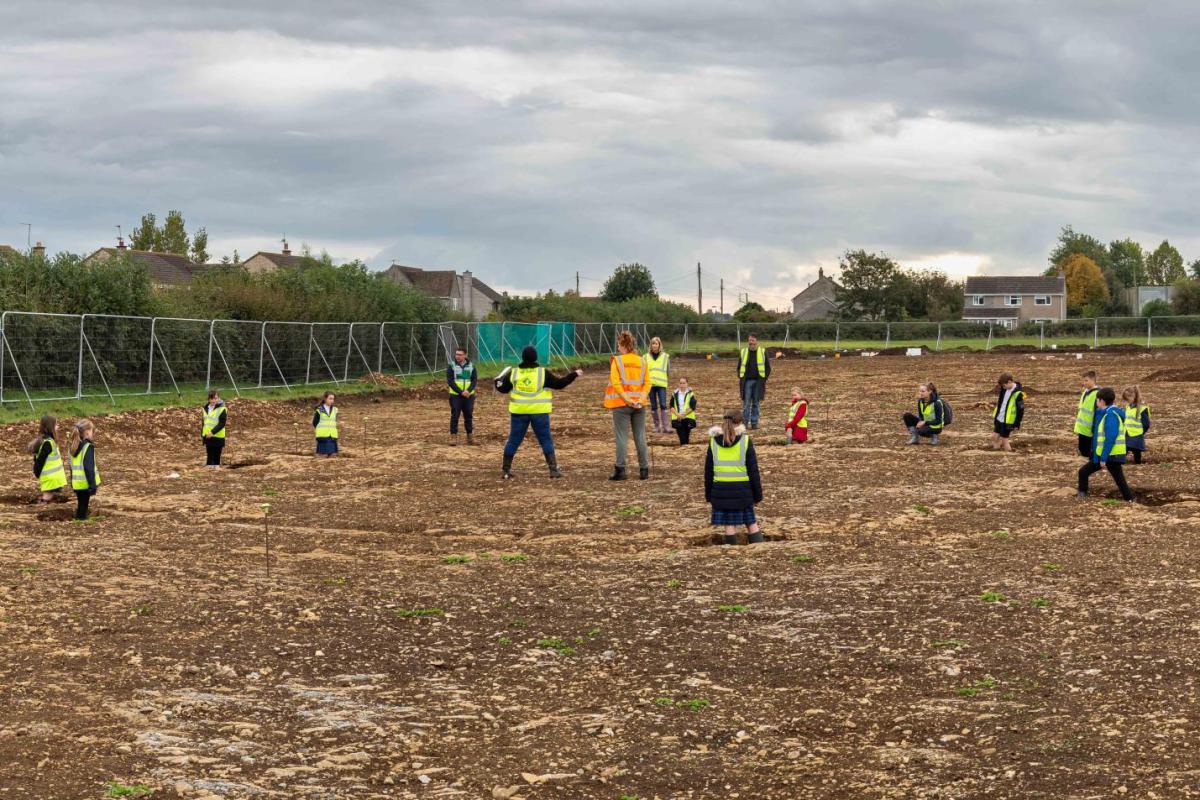
Above: visiting school children stand in a circle, demonstrating the size of one of the excavated Iron Age roundhouses
During the Romano British period we see a further shift in the settlement activity, as it moves across to the southwest and western portion of the site. The here is predominantly agricultural, with a series of ditched enclosures, probably used for growing crops and grazing animals. Three crop drying ovens were excavated, two of these were intercutting. Scorch marks on the stone walls of the earlier crop drying oven suggest it may have burnt down and been replaced by a later oven, cut deep into the bedrock. A flagstone floor surface was also encountered, possibly associate with a wooden barn-type structure.
Discovery of a cemetery
Most noteworthy was the discovery of some 50 burials dating from the Late Iron Age to the Roman period.
The four mortuary areas spread along the southwest and western portion of the site. The mortuary areas contained a mix of adults, teenagers and children. Burials of babies were also found across the whole of the excavation area. Over 50 burials were excavated, consisting of a variety of burial traditions associated with both the Iron Age and Romano British periods.
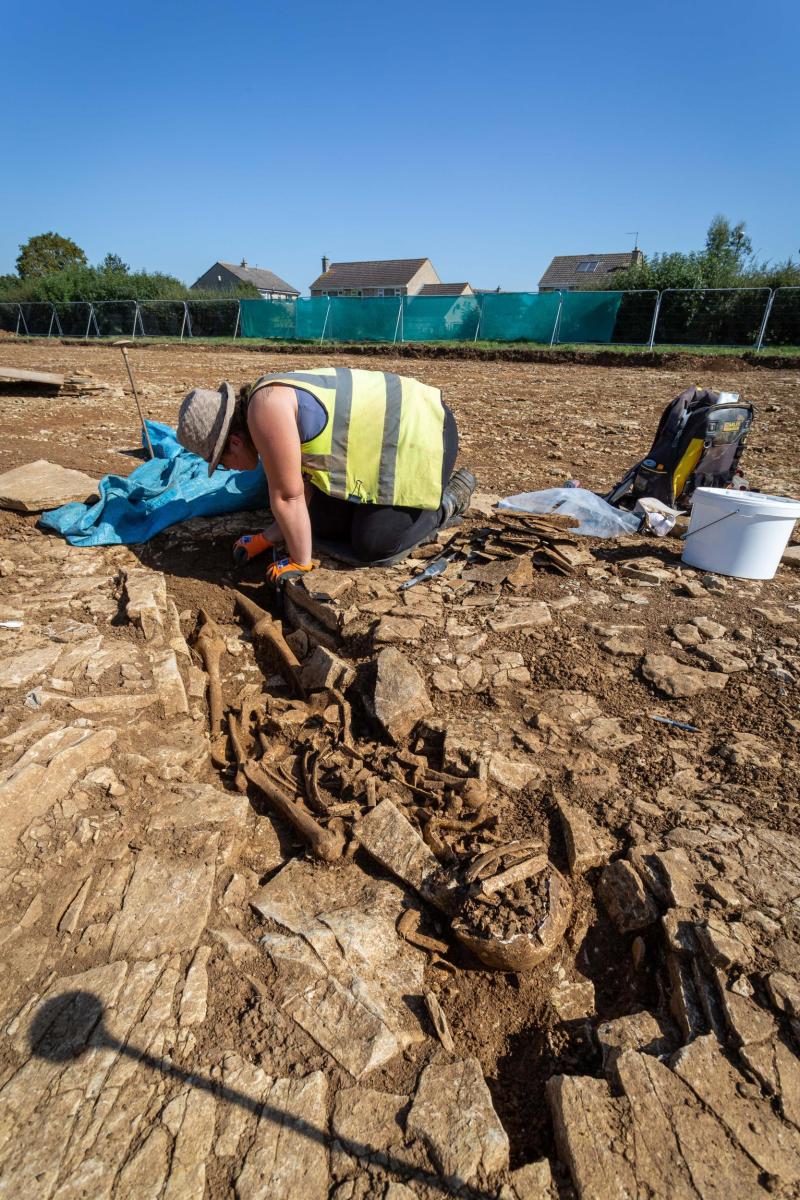
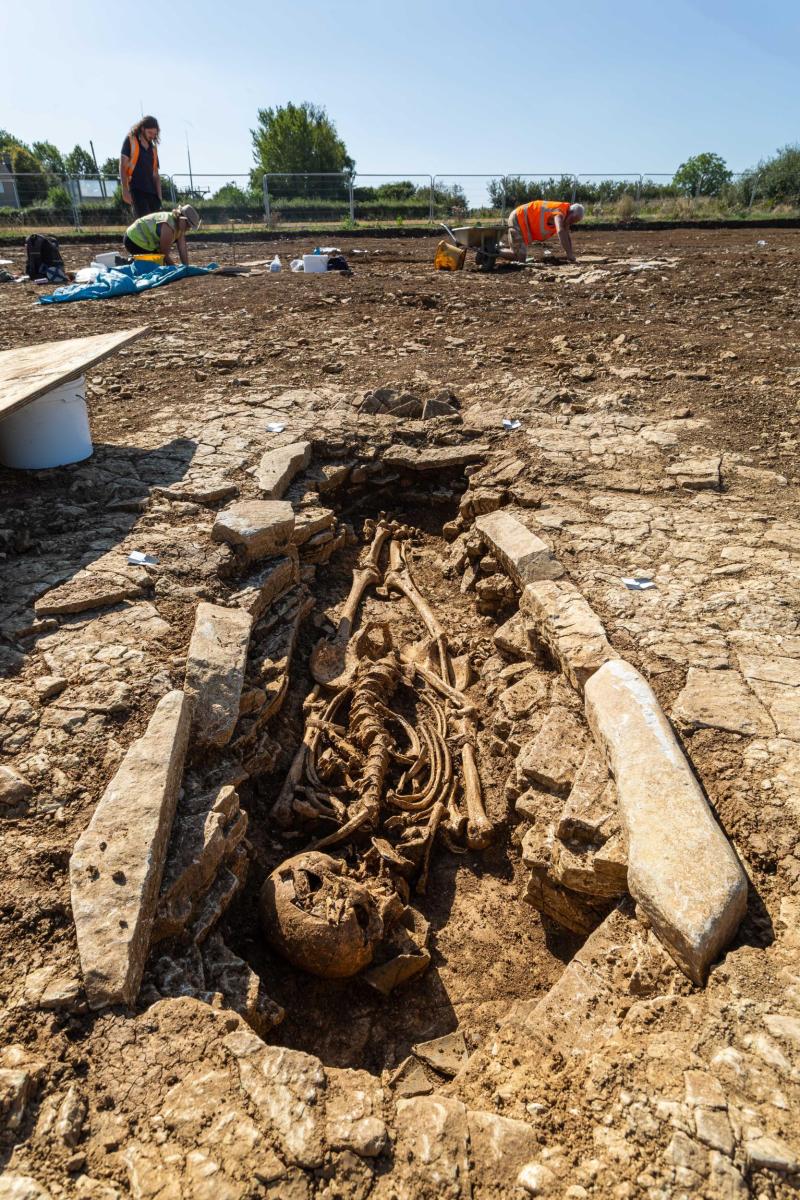
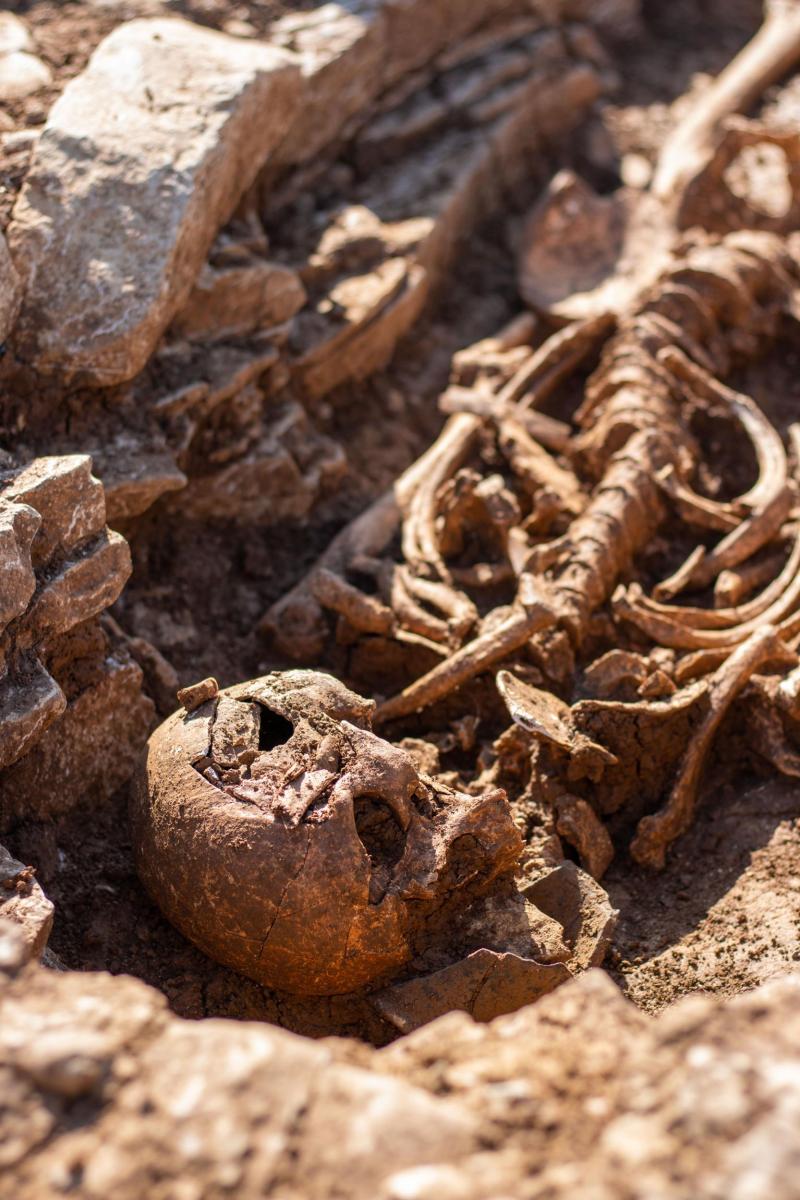
The grave constructions also varied from purpose-built tomb and ‘cist’ type burials to shallow dug graves with the skeletal remains found resting on top of the natural bedrock. May of the graves contained coffin nails, suggesting the dead had been placed within coffins before being committed to the ground. Several of the graves contained complete pots and some contained jewellery.
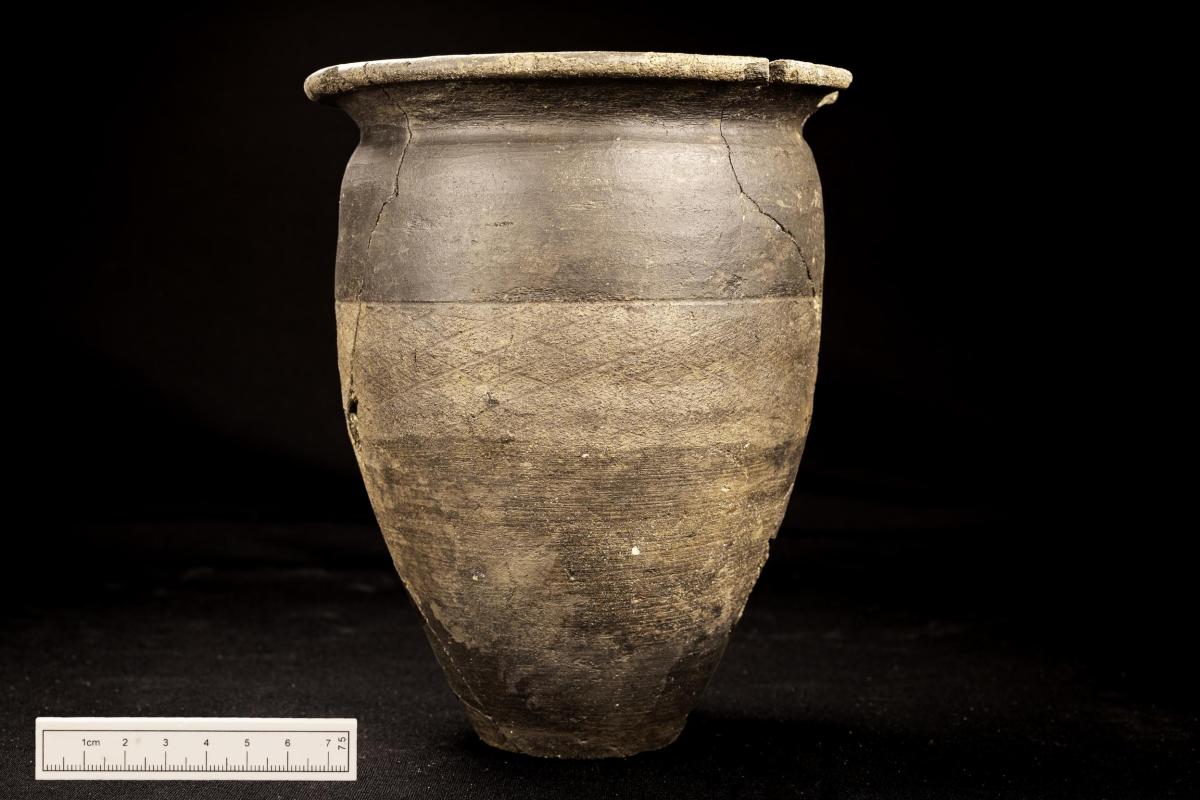
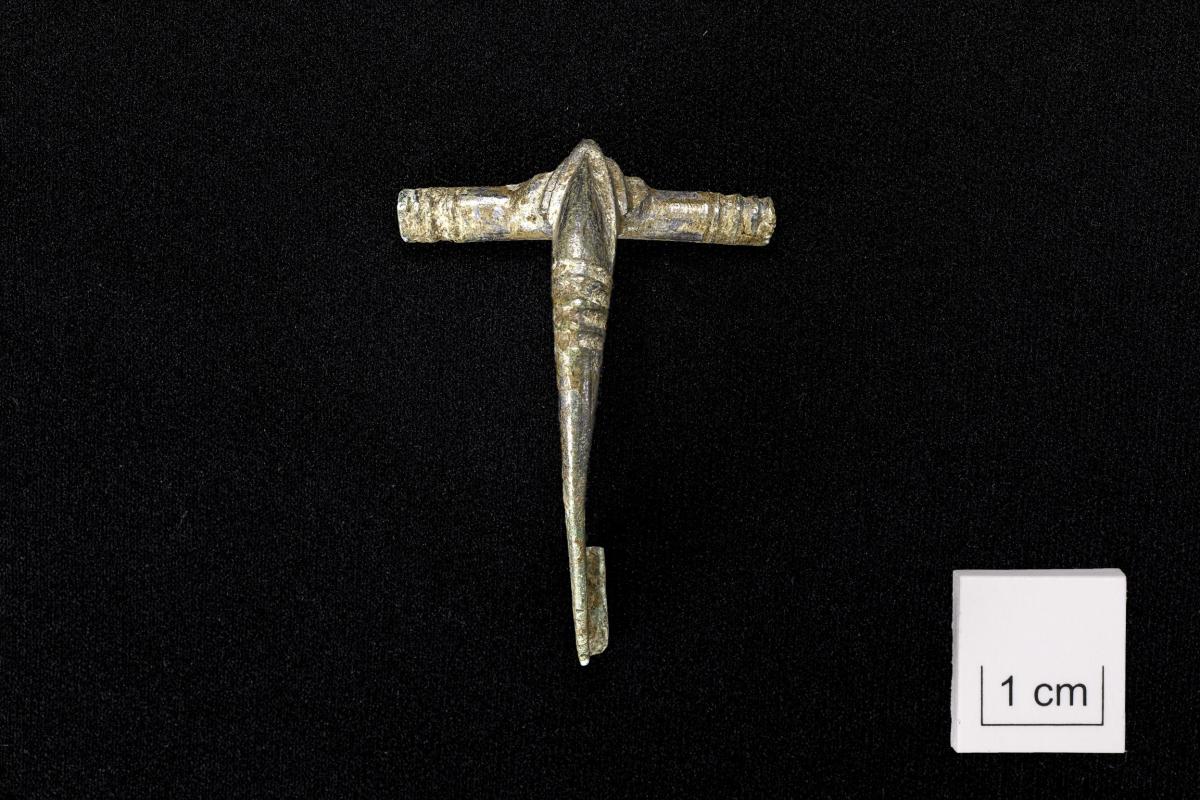
The rare ‘tent’ burial
The most unique grave was a tent-like stone structure, found in the top of one of the abandoned crop drying ovens. Large slabs of blue lias stone had been placed over the inhumation to create a tent-like structure with each end being sealed with a further stone slab.
This type of grave is rare in the UK and appears to represent a local version of tombs more commonly seen in Italy and Iberia, constructed of tiles (a capanna trans. ‘hut’ or ‘cabin’), examples of which have been found in York. This grave contained the remains of a gracile elderly woman over the age of 60.
“Due to the size and lack of disturbance on the site, we have been able to examine generations of a community whose existence spanned over 500 years. We think the cemetery may have been connected to a villa estate in the nearby area, and what has been particularly fascinating is the cultural transition that we see here – from the native Iron Age traditions to the adoption of more Roman customs.”
Damian De Rosa, Wessex Archaeology Project Manager
“This site is a significant discovery - the most comprehensive modern excavation of a Roman cemetery in Somerset. “The application of technology including aerial drones and techniques such as isotope and ancient DNA analysis offers major opportunities for insights into the lives of the Roman population of Somerton”.
Steve Membery, South West Heritage Trust archaeologist
Next steps
Having successfully completed the complex mitigation on the site, work on the new 420-pupil, 14-class school will continue.
The archaeology has been carefully gathered for further scientific analysis. A full report of the findings will be published in due course. It is hoped that the discoveries can be used to teach pupils about the history of the area, and that the archaeology of the roundhouses can be reflected in the site development.
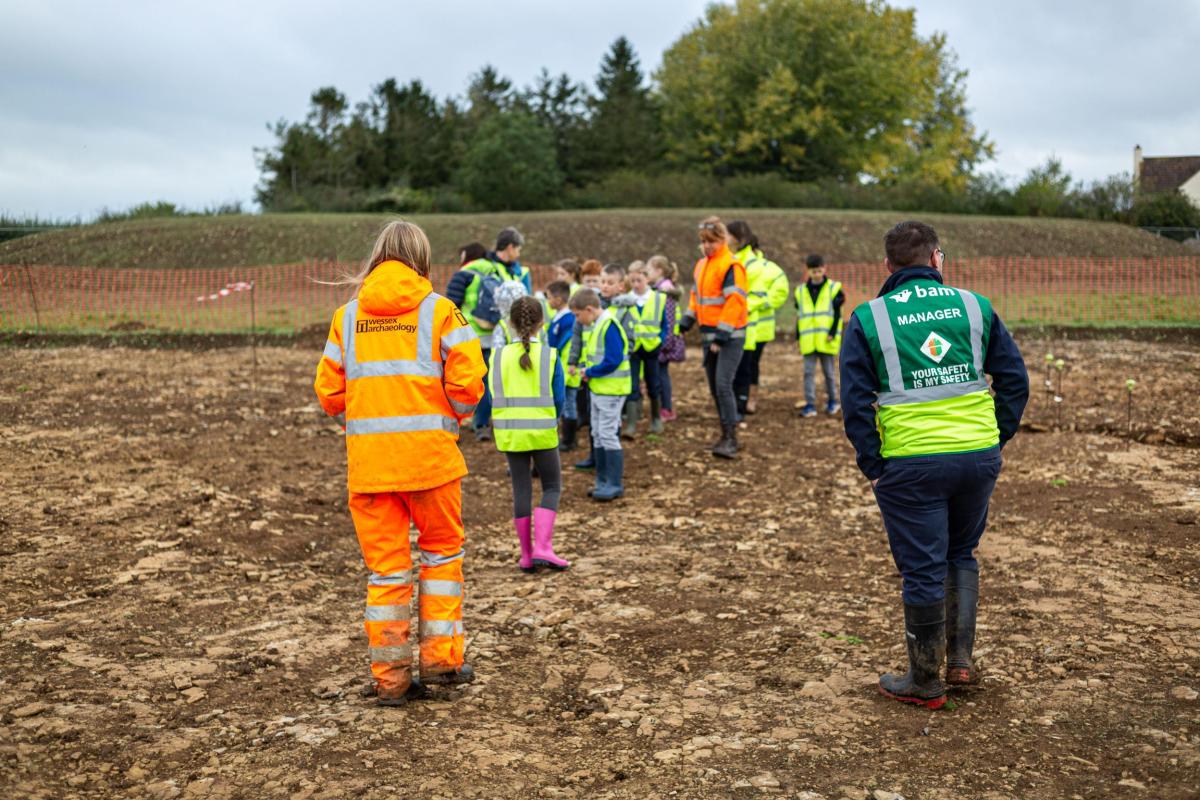

“The findings are both exciting and extraordinary, providing us with valuable insight into Somerset’s early history. We will be able to understand so much more about the lives of Roman people in Somerton thanks to these discoveries.
“Our team have a great track record of delivering fantastic new schools and while we’d always prefer any delay to be avoided, I think that the students, parents and teachers will understand in this instance, given the scale and importance of the archaeological finds here.
“I am looking forward to seeing another new Somerset school reach the construction stage and would like to thank the school for its support throughout. The children have already had an opportunity to visit the site, hopefully inspiring some future archaeologists, and I’m sure they will be excited to continue to learn more about this very special site.”
Councillor Faye Purbrick, Cabinet Member for Education and Transformation
